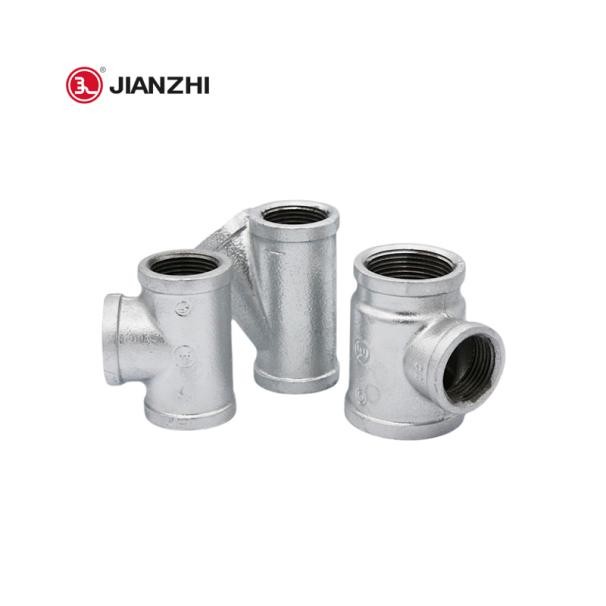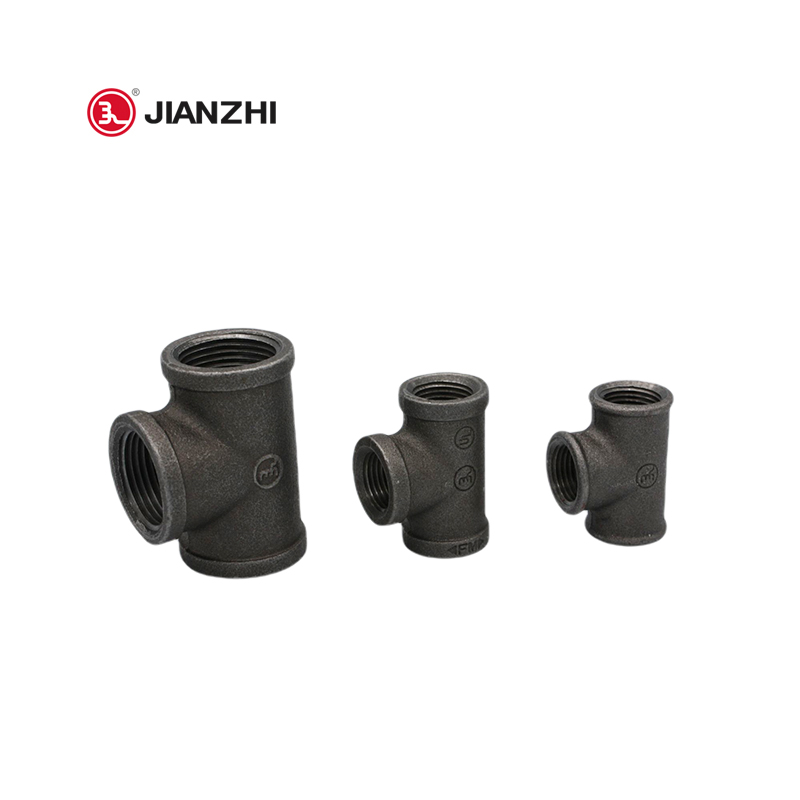Mar. 08, 2024
Tee is also called pipe fitting tee or tee fitting. Tee joint is used at the branch pipe of the main pipe. It has three openings, that is to say, one entrance and two exits; or two entrances and one exit. It is a type of chemical pipe fittings. There are T-shaped and Y-shaped pipe fittings. There are equal-diameter pipe openings and different-diameter openings. They are used to change the direction of fluids and can be used for water pipelines, oil pipelines and the transportation of various liquid chemical materials. Pipeline. Mainly used in medicine, water conservancy (water-saving irrigation, water supply and drainage), energy (oil, natural gas, nuclear industry), construction and other engineering fields.
Equal tee: a tee with the same diameter as the main pipe and branch pipe.
Reducing tee: The diameter of the branch pipe is smaller than the diameter of the main pipe.

Butt welding tee: It is a tee fitting that is welded after being butted to the connecting pipe fitting.
Socket-type tee: It is a tee fitting that is welded or welded after inserting the connecting pipe fitting into each end of the tee.
Tube-type tee: Each end is a tube fitting, and the pipe fitting is inserted and then tightened.
Threaded tee: A tee fitting that connects pipe fittings in a threaded manner.
It can be divided into stainless steel tee, carbon steel tee, copper tee, PVC tee, ductile iron tee, etc.
Positive tee: It is the tee fitting of the vertical main pipe of the branch pipe.
Inclined tee: It is a tee fitting with a certain angle between the branch pipe and the main pipe.

1. Chinese standards: GB/T12459, GB/T13401
2. International standard: ISO49
3. American standard: ANSI/ASTM B16.3/14/39
4. EU standard: EN10242
5. British Standard: BS1256
6. German standard: DIN2950
7. Japanese standard: JIS B2301
8. Brazilian standard: NBR6943
9. Japanese standard: IS 1879
Hydraulic bulging uses a special hydraulic press to inject liquid into the tube blank with the same diameter as the tee, and squeeze the tube blank through the synchronous centering movement of the two horizontal side cylinders of the hydraulic press. The volume of the tube blank becomes smaller after being squeezed, and the inside of the tube blank becomes smaller. The pressure of the liquid increases as the volume of the tube becomes smaller. When the pressure required for the expansion of the tee branch is reached, the metal material flows along the inner cavity of the mold under the dual action of the liquid pressure in the side cylinder and the tube and expands the branch.
The hydraulic bulging process of the tee can be formed in one step, and the production efficiency is high; the wall thickness of the main pipe and shoulder of the tee has been increased.
In hot press forming, the tube blank that is larger than the diameter of the tee is flattened to approximately the diameter of the tee, and a hole is made in the part where the branch pipe is stretched; the tube blank is heated, put into the forming mold, and the drawn tube is loaded into the tube blank. The die for extending the branch pipe; the tube blank is radially compressed under the action of pressure. During the radial compression process, the metal flows in the direction of the branch pipe and forms a branch pipe under the stretching of the die. The whole process is formed through the radial compression of the tube blank and the stretching process of the branch tube parts. Different from the hydraulic bulging tee, the metal of the hot-pressed tee branch is compensated by the radial movement of the tube blank, so it is also called the radial compensation process.
Due to the use of heated and pressed tees, the tonnage of equipment required for material forming is reduced. Hot-pressed tees have wide adaptability to materials and are suitable for low carbon steel, alloy steel, and stainless steel materials; especially tees with large diameters and thick pipe walls usually use this forming process.
As a Chinese pipe fittings manufacturer, JIANZHI has many years of experience. The pipe fittings we produce are sold all over the world. If you want to buy the best products at the most suitable price, please contact us, and we will give you the lowest discount!
SAFER
PRODUCT INFO
ABOUT JIANZHI
TECH DATA
Contact Us
E-mail: sales1@jianzhi-fitting.com
Tel: +86 18698027872
Office In Tianjin:
Heping District, Tianjin, China.
Production Base 1:
Chifeng, Inner Mongolia, China.
Production Base 2:
Tangshan City, Hebei Province, China.
Production Base 3:
Schelei Street,Baicoi City,Prahova County,Romania
Service email: info.ro@jianzhi-fitting.com
Sales email: market.ro@jianzhi-fitting.com
Tel: +40(755)011 849
